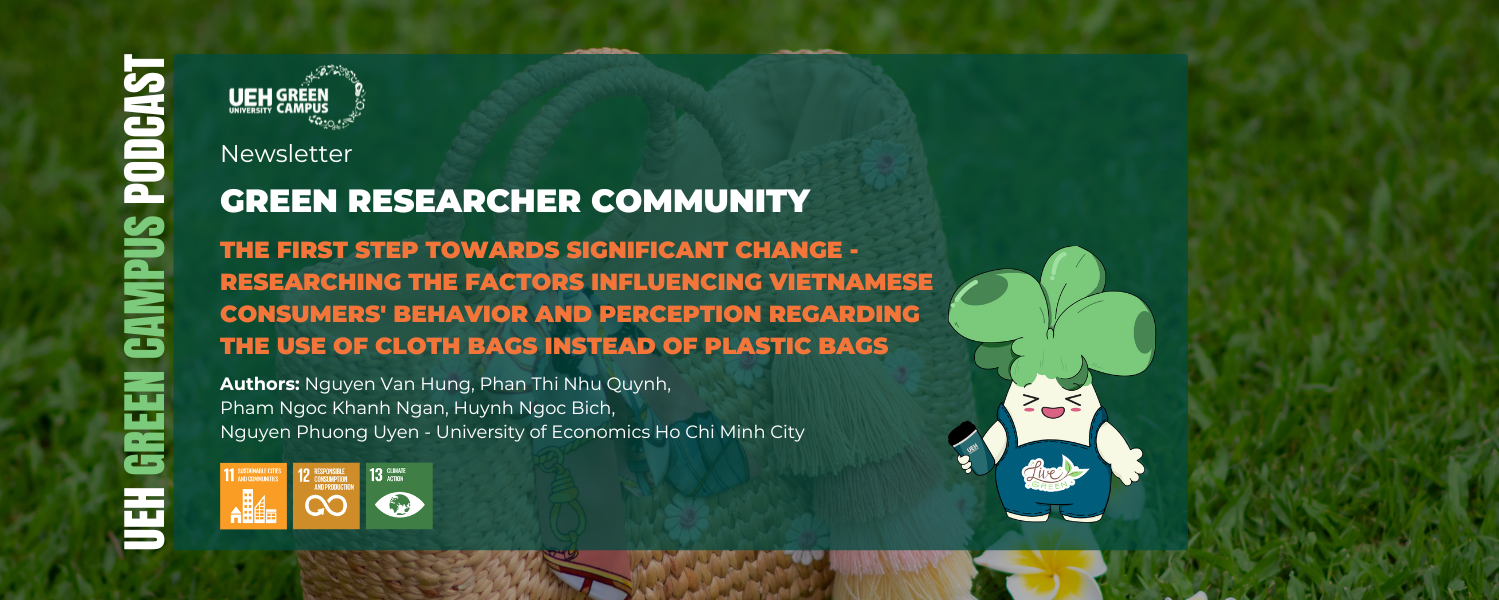Keywords: Green consumption; Plastic bags; Environmentally friendly products; Fabric bags
In the face of the increasingly serious challenge of plastic waste pollution, many countries are striving to promote green consumption trends, among which replacing plastic bags with cloth bags has become a practical and meaningful choice. In line with that spirit, a group of students from the University of Economics Ho Chi Minh City (UEH) conducted a study to further explore the awareness and green consumption behavior in Vietnam, focusing on fabric bags. The research not only analyzes the relationship between demographic factors and consumer behavior but also forecasts the trend towards sustainable choices in the future. The expected results will contribute additional practical data to the process of developing sustainable consumption policies and jointly protecting the environment.

Definitions
*Always favored for its availability and very low cost
Plastic bags appear in most consumer, household, and production activities, being used for waste collection, packaging goods, and food. However, due to their small size and difficult recyclability, used plastic bags create waste that lasts for hundreds of years, putting pressure on waste management systems. However, the most dangerous environmental impact of the product is its difficulty in decomposing under natural conditions. According to Xanthos et al. (2017), plastic from plastic bags contributes to over 8 million tons of plastic waste dumped into the oceans each year, severely affecting marine ecosystems. In addition, bags can contain harmful chemicals such as phthalates, which disrupt the endocrine system and increase the risk of cancer in humans with prolonged exposure (Rafia Afroz et al., 2017).
*A sustainable, environmentally friendly alternative
According to Quanyin Tan and colleagues (2022), fabric bags used in shopping and daily activities generally help significantly reduce plastic waste. Specifically, cotton, canvas, or recycled fibers—the components of fabric bags—can be reused multiple times, are easy to clean, and durable over time. The variety in styles and sizes also caters to more needs compared to plastic bags, from grocery shopping to storing personal items. Although the initial cost is higher (around 20,000 - 50,000 VND each), fabric bags, when used properly, often provide long-term value due to their aesthetics, lightweight nature, and reusability, encouraging buyers to develop sustainable consumption habits. Therefore, it can be affirmed that fabric bags are an important option contributing to the reduction of plastic waste and promoting green consumption.
Research foundation
To understand consumer behavior and perceptions regarding the use of cloth bags instead of plastic bags, the research team used a model combining the Theory of Reasoned Action (TRA) and the Theory of Planned Behavior (TPB) by Ajzen and Fishbein (1975). These two theories explain behavior based on three main factors: attitude, subjective norms, and perceived behavioral control. The authors expanded the model by adding factors such as environmental awareness and personal/social responsibility, which have been shown to influence green consumer behavior in previous studies (Erkan Ari & Veysel Yilmaz, 2017; Zahra Batooli et al., 2022).
The proposed research model includes the main factors: attitude towards using cloth bags, subjective norms (influence from society, friends, family), perceived behavioral control (ease of using cloth bags), awareness of the harm caused by plastic bags, and personal/social responsibility. These factors directly and indirectly influence the intention to use cloth bags, helping to predict sustainable consumer behavior.
Research results
*Women, although they tend to prioritize using cloth bags when shopping, hesitate when deciding to pay for products.
The research results have shown that both genders mostly support the use of cloth bags, but women tend to support it with a more decisive attitude than men. For male consumers, while they are still hesitant about changing their behavior, females show a significantly higher willingness to change their behavior when participating in environmental protection activities. However, one point emphasized is that women consider more carefully than men at the initial stage of deciding to purchase fabric bags.
*The decision to use cloth bags is not influenced by income levels.
Income differences have been shown by the research group to have no significant impact on the behavior of domestic consumers using cloth bags when shopping. The group argues that because a cloth bag, with a relatively low investment cost, can be reused multiple times, the income disparity seems to have no significant impact on the support for using cloth bags.
*The level of education is directly proportional to the awareness of using cloth bags.
The disparity in educational levels shows that the higher the degree, the more knowledge and awareness consumers have about environmental issues. The development of the economy always brings about environmental consequences, therefore consumers need to be aware of their social responsibility in protecting the environment.
*Protecting the environment by using cloth bags is related to the awareness of the negative consequences of plastic bags.
The research team found that when consumers are clearly aware of the negative consequences of using plastic bags, they tend to self-adjust their awareness towards "green consumption."
*The correlation between the behavior and perception of Vietnamese consumers regarding the use of cloth bags instead of plastic bags.
Consumer behavior and perception are influenced by demographic factors such as age, gender, attitude, expectations, and awareness of consequences. With younger ages, the expectations and awareness of the consequences of plastic bags are higher, leading them to be more willing to share their experiences and encourage the community to use cloth bags more.
Policy implications
By measuring the differences in behavioral and perceptual relationships among people with different demographics regarding the use of cloth bags instead of plastic bags, the study has demonstrated the importance of cloth bags for the living environment and human health, contributing to changing societal awareness and actions in green consumption activities, and forming the habit of using cloth bags in consumption and daily life. The solutions proposed by the research team include:
At the enterprise and non-governmental organization level, it is necessary to enhance communication campaigns to raise awareness about the harm of plastic bags and the benefits of cloth bags, emphasizing aesthetics, convenience, and long-term value; leverage social norms through collaboration with influencers, and use social media to spread green consumption behaviors to all demographics, especially targeting young people and women. The group also encourages retailers to increase the availability of cloth bags by offering the products at checkout counters at discounted prices, including them as gifts with purchases, and designing and maintaining long-term promotional programs to form habits.
Government levels can join hands to support by learning from and consulting with friendly countries (Japan, Malaysia) on regulations such as plastic bag restrictions, implementing mandatory plastic bag fees at supermarkets and stores, using these as practical bases to issue supportive policies, and encouraging market sectors to collaborate towards the goal of raising awareness and reducing plastic bag consumption in the daily lives of each citizen. Finally, invest more heavily in the waste management system, especially in the areas of collection and recycling, to reduce environmental pressure and launch campaigns promoting the production of fabric bags from recycled materials.
The above policies are expected to have the potential to widely spread green consumption behaviors within the community aimed at environmental protection.
The research has indirectly contributed to SDG 11, 12, 13. See the article Research on the Factors Influencing Vietnamese Consumers' Behavior and Awareness Regarding the Use of Fabric Bags Instead of Plastic Bags HERE.
Authors: Nguyen Van Hung, Phan Thi Nhu Quynh, Pham Ngoc Khanh Ngan, Huynh Ngoc Bich, Nguyen Phuong Uyen - University of Economics Ho Chi Minh City.
This article is part of the Green Research Community series with the message "Research Contribution for UEH Living Lab Green Campus" UEH respectfully invites the community to watch the next Green Research Community newsletter.
*In order to create optimal conditions for the development of the "UEH Green Research Community," community members will participate in a scientific research methodology class related to the topics of Living Lab and Green Campus. In addition, when the product meets the standards, the research group will receive a Certificate from the UEH Sustainable University Project Committee and funding support for a qualified project.
Additional information
SDG 11 – Sustainable Cities and Communities aims to build urban areas and communities that are resilient, safe, and sustainable, through improving the quality of living environments, effective waste management, and ensuring access to basic services for all residents. A sustainable city not only focuses on physical infrastructure but also includes the awareness and behavior of residents in protecting the shared living environment.
SDG 12 – Responsible Consumption and Production focuses on ensuring sustainable production and consumption patterns, thereby reducing pressure on natural resources, minimizing waste, and environmental pollution. This goal emphasizes the importance of effective waste management, optimal resource use, and promoting changes in the consumption behavior of individuals and communities, especially through education and awareness.
SDG 13 – Climate Action calls for urgent action to combat climate change and its negative impacts, through reducing greenhouse gas emissions, enhancing resilience, and increasing community awareness. This goal not only includes national-level policies but also requires changes in individual and community behavior in daily life, especially in areas directly related to waste generation and management.
News, photos: UEH Green Campus Project, UEH Youth Union - UEH Student Association, UEH Media and Partner Development Board







